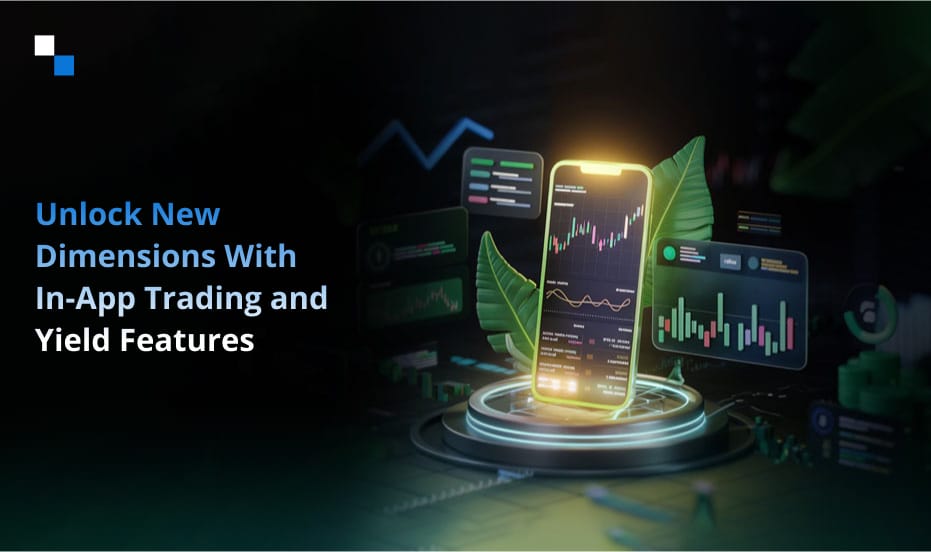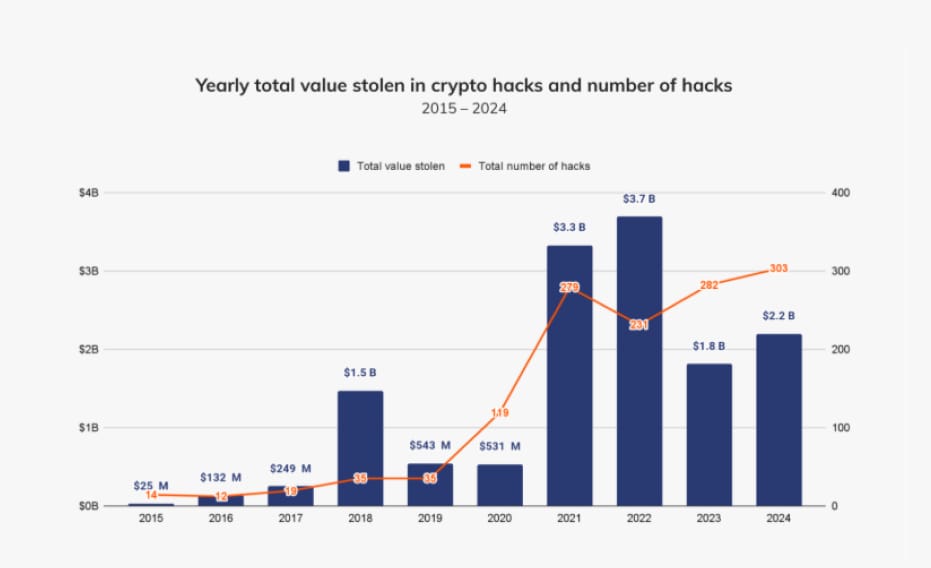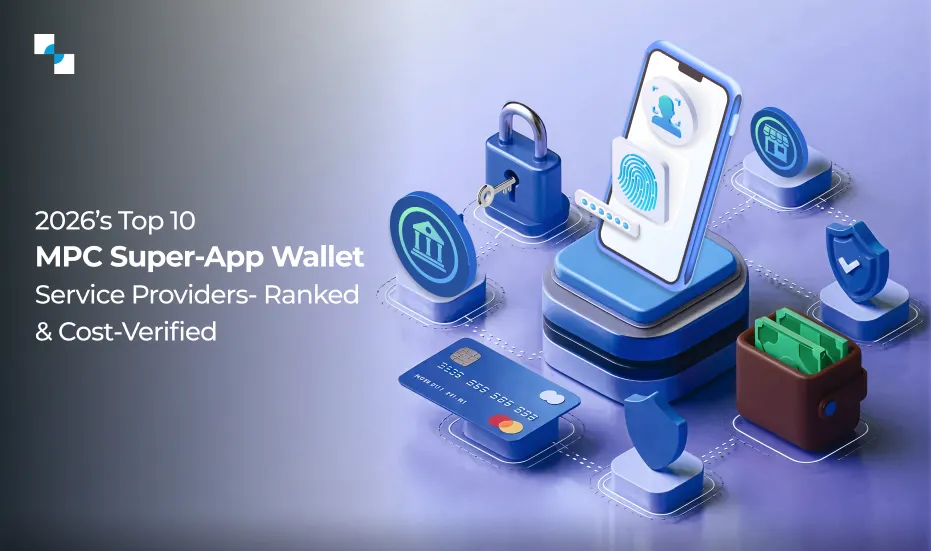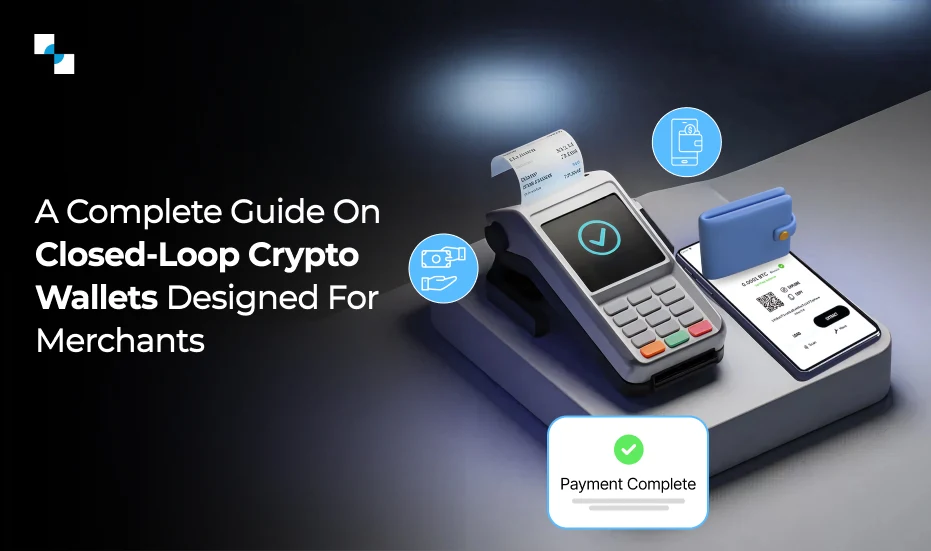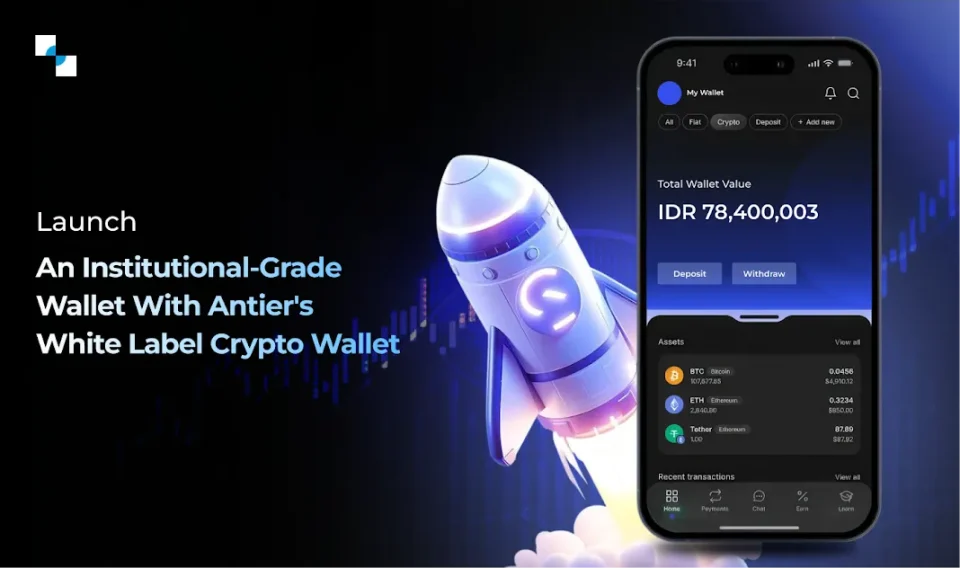Table of Contents
- Beyond Safekeeping: The Transformation of Crypto Wallet Development
- Top Crypto Wallets Leading The Charge
- Pillars of Success for Crypto Wallet Development in 2025
- Top Features For a Winning Wallet Development in 2025
- Costs and Timelines For A Future Proof Wallet-as-a-Service Platform
- Adapt or Get Left Behind
- Why Choose Antier
Beyond Safekeeping: The Transformation of Crypto Wallet Development
Once seen as digital safes for storing private keys and digital assets, crypto wallets are now morphing into dynamic financial powerhouses, blending top-notch security and utility. DeFi, NFTs, and multi-chain ecosystems have further pushed crypto wallets’ boundaries, forcing them to adapt, innovate, and expand. With in-app multi-asset trading and yield generation features, these digital vaults unlock new dimensions, making them gateways to the expansive world of DeFi. These revolutionary crypto wallet development solutions prioritize user convenience by enabling users to earn, swap, and manage crypto without ever leaving the application.

Top Crypto Wallets Leading The Charge
It’s no longer a hot trend but a growing reality. Top players on the charts and Crypto Wallet-as-a-Service (WaaS) providers are pioneering this shift. Those who haven’t are on the verge of integrating it. The emergence of these integrated features suggests a significant move towards embedding cryptocurrency functionalities within widely used familiar interfaces, making them more accessible to individuals who might otherwise hesitate to navigate complex, dedicated platforms.
The following table summarizes some of the top cryptocurrency wallets that currently offer in-app multi-asset trading and yield features:
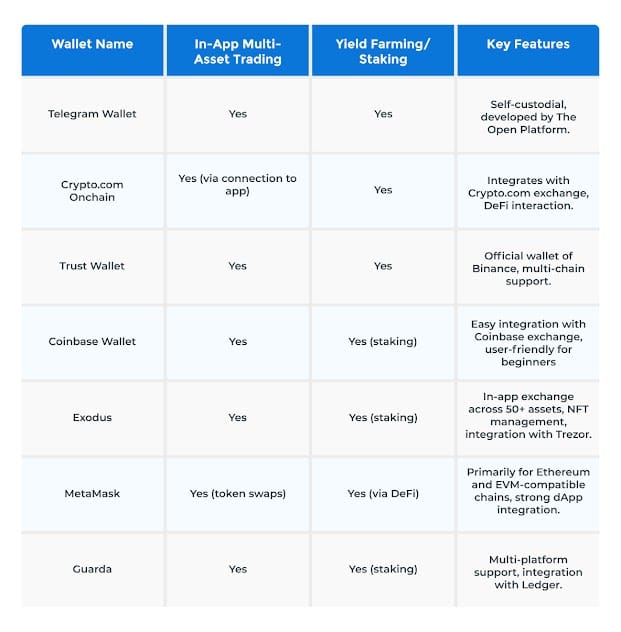
These wallets aren’t just surviving the competitive crypto market—they’re thriving by turning passive users into active participants. By combining custody with earning opportunities, top wallets-as-a-service platforms can set the standard for what modernized crypto tools can achieve.
Pillars of Success for Crypto Wallet Development in 2025
Whether you’re an existing wallet service provider or an entrepreneur seeking a future-proof wallet-as-a-service platform, you must learn about the key pillars that dictate the success of modernized digital asset wallets in 2025 and beyond. These are the five fundamentals that any progressive crypto wallet development project must focus on:
1. Multi-chain and cross-platform compatibility : Users are no longer limited to a single blockchain. Future-oriented wallets must enable their customers to manage a diverse crypto portfolio with a unified wallet interface that supports seamless cross-chain swaps and multi-network compatibility. This is possible with the integration of relevant and suitable atomic swap technologies, interoperability protocols, layer 2 solutions, blockchain bridges, multi-chain wallet architecture, etc., during crypto wallet development. Not just multichain but also multi-device compatibility (iOS, Android, and web browsers and desktop apps) is equally crucial for wallets planning to tap a huge user base.
2. User-Centric Design : A simplified user interface that demystifies complicated workflows and mirrors the user-friendliness of traditional finance applications for beginners attracts novices and broadens the overall user base. The complexity associated with interacting with crypto applications must be significantly reduced before cryptocurrency goes mainstream, as it is the major barrier. Crypto wallet-as-a-service (WaaS) providers must implement clear, logical navigation, comprehensive educational modules, and features simplifying complex processes, such as QR codes for facilitating quick, error-free payments and address books for saving frequent recipients.
3. Regulatory Agility : Regulatory compliance is a critical pillar for the long-term success and sustainability of cryptocurrency wallets. By prioritizing it and implementing KYC and AML protocols, upcoming projects and crypto wallet-as-a-service (WaaS) platforms can ensure that they operate within legal frameworks, contributing to a more mature and responsible ecosystem. The US establishes its strategic Bitcoin reserve and national digital asset stockpile, Kyrgyzstan introduces its gold-backed stablecoin, and Dubai’s state bank, Emirates NBD, launches its crypto trading module on Liv X and issues a license to Ripple. Many other countries are gradually increasing their scrutiny of the cryptocurrency space, planning favorable policies to support exchange, payment solutions, and crypto wallet development solutions.
4. Security Innovation : The inherent risks associated with digital asset custody and the potential for theft remain no matter how hard crypto wallet development projects strive to attain an impenetrable nature. Therefore, security must be an innegotiable factor when picking the best white label wallet development solution. Essential security mechanisms, including the following, must be in place to safeguard user assets and foster confidence in platforms:
- End-to-end encryption to protect data in transit and at rest
- Multi-factor authentication (MFA) to prevent unauthorized access
- Secure and robust private key management to ensure users maintain control of their funds
- AI-based fraud and anomaly detection for flagging suspicious activities in real time.
- Effective anti-phishing measures to guard against social engineering attacks
- Hardware wallet support for users with larger holdings
- Multi-party computation (MPC) for enhanced security without reliance on seed phrases
- Biometric verification, Multi-signature authentication, etc.

Source: Chainanalysis
5. Scalability : Scalability is another vital pillar defining the success of cryptocurrency wallet development. The underlying architecture of the wallet-as-a-service (WaaS) platforms must be inherently scalable to efficiently handle an increasing number of users and the growing volume of transactions without compromising performance or security. This necessitates a robust backend infrastructure capable of ensuring seamless performance, even during periods of high network congestion on the supported blockchains. Furthermore, it is recommended to pick a suitable underlying blockchain for crypto wallet development that allows maximum TPS without compromising security, and decentralization. Progressive projects can also explore Layer 2 solutions (like zk-rollups and optimistic rollups), asynchronous transaction processes, auto-scaling, infrastructure, etc.
Industry players and wallet-as-a-service platforms that nail these elements are sure to dominate the next era of crypto adoption.

Top Features For a Winning Wallet Development in 2025
Several key features are expected to become essential components of competitive and future-proof cryptocurrency wallet development:
1. In-App Multi-Asset Trading : The ability to seamlessly buy, sell, and swap a wide range of NFTs, tokenized RWAs, and cryptocurrencies across different blockchain networks within a single wallet environment will be a fundamental expectation in 2025 and beyond.
2. Yield Farming and Staking : Earning passive income on cryptocurrency holdings will be made more accessible through in-app staking, yield farming modules, and integration with various DeFi yield farming protocols.
3. Social Logins : Wallet-as-a-service (WaaS) platform’s integration with familiar Web2 platforms like Google or Facebook for wallet access and onboarding can significantly lower the barrier to entry for new users.
4. Custom Wallet Addresses : Offering users the ability to create personalized and easily recognizable wallet addresses can enhance branding and improve the user experience.
5. MEV Protection : As users and hackers become more sophisticated, integrating built-in effective MEV safeguards during crypto wallet development will be crucial for ensuring fair and transparent transactions.
6. Account Abstraction : To enhance user experience and simplify interactions with dApps for those new to crypto, features like flexible fee options, simplified management of permissions, and streamlined account recovery processes are highly recommended.
7. Community Governance : Implementing a DAO governance model during crypto wallet development simplifies the process for users to participate in voting and other governance activities within these decentralized organizations.
8. Integration with Fiat on-ramps/off-ramps : Easy and direct ways to buy and sell crypto using a wide variety of traditional fiat currencies will streamline the user experience and facilitate broader adoption.
9. Portfolio Tracking and Analytics : Opt for a white label wallet development solution that facilitates effective portfolio management with comprehensive dashboards that provide users with a clear overview of asset performance, transaction history, and insightful analytics.
10. Push Notifications and Alerts : Enabling users to access real-time notifications for transaction confirmations, significant price movements, and critical security alerts empowers them to make informed decisions and enhances the overall user experience.
11. Gamification : The incorporation of gamification elements in a wallet-as-a-service platform can further enhance user engagement and make crypto management more approachable and enjoyable. Some popular gamification techniques include offering rewards for completing certain actions, interactive challenges, and progress tracking through leaderboards, etc.
12. DeFi Aggregators for Optimized Yield : Integrating DeFi aggregators or implementing an L2-based aggregation module brings next-level efficiency to the crypto wallet platforms. With tools to compare yields and trading prices across multiple decentralized finance platforms, crypto wallet development projects can enable their users to optimize their returns and execute trades at the most favorable rates.
Costs and Timelines For A Future Proof Wallet-as-a-Service Platform
Developing a feature-rich, future-proof wallet isn’t cheap or quick. Here’s a rough breakdown of what the cost includes:
- Security Infrastructure
- Trading/Yield Features
- UX/UI Design
- Cross-Chain Compatibility
With a premium white label wallet development solution, you can launch within 2 weeks, and it may cost you anywhere between $40,000 and $80,000. Whereas a custom solution offered by a top-notch crypto wallet development company may cost you around $60k-$250k, and timelines may range from 6–18 months, depending on complexity.
However, the cost and time may vary significantly from those mentioned above, based on:
- Complexity of the features and functionality
- Type of wallet required
- Number of supported blockchains and cryptos
- Security measures
- Blockchain Platform chosen for crypto wallet development
- Cross-platform requirements
- Size and geographical location of the development team
- Complexity and level of customization in the UI/UX design
Adapt or Get Left Behind
As cryptocurrencies transcend their stature as a mere asset class for speculation, wallets are going beyond the custodian role and offering functionalities beyond the basic storage. Futuristic wallets won’t just store keys but will be a hub for various financial activities. The message is clear—innovate or fade into obsolescence.
Whether you are looking for a white label wallet development solution or a wallet-as-a-service platform, prioritize in-app trading, yield, gamification, cross-chain, and other top features mentioned above. If you don’t, you won’t be able to claim your stakes in the $3 trillion market.
The race is on—will your wallet lead the pack?
Well, we can make it happen.
Why Choose Antier?
Antier, a globally leading crypto wallet development company, stands at the forefront of this transformation—delivering secure, scalable, and feature-rich wallet solutions integrated with cutting-edge technologies. With deep domain expertise in DeFi, blockchain interoperability, and advanced security frameworks, Antier empowers enterprises to build next-generation wallets that are future-proof, compliant, and primed for success in 2025 and beyond.
Let’s build your dream cryptocurrency wallet development project together; share your requirements today!


